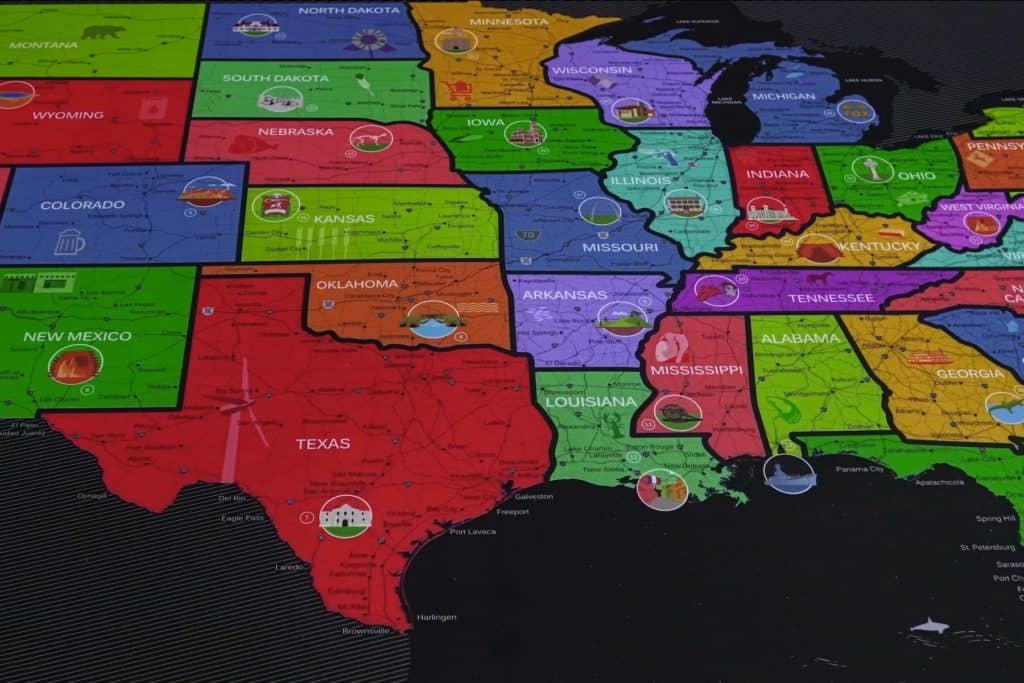Across the country, cremation rates are steadily increasing, and it’s now more common than burial in many places. However, that’s not the case in every state. While the nationwide cremation rate in 2022 was over 59%, there are a handful of states with cremation rates that are well below the average.
Someone’s openness or opposition to cremation depends on a variety of factors. For alkaline hydrolysis, also known as water cremation, opposition largely comes from lack of knowledge. Even people who prefer flame-based cremation over burial are sometimes hesitant to embrace the concept of alkaline hydrolysis simply because they aren’t familiar with the process. When they find out that the process is more eco-friendly, safer and produces the same results as traditional cremation, many people end up preferring alkaline hydrolysis.
So why is cremation in general less common in some states than others? And why has the use of alkaline hydrolysis been straight out opposed in a few states? To answer those questions we’ll start by looking at the states with the lowest cremation rates overall.
States With the Lowest Cremation Rates
It stands to reason that if traditional cremation is not the norm in a state, then people in that state are even less likely to choose alkaline hydrolysis. Below are the five states with the lowest cremation rates based on the Cremation Association of North America’s most recent data from 2022:
Mississippi – 30.6%
Alabama – 36.1%
Kentucky – 38.4%
Louisiana – 41.6%
Utah – 42.8%
The cremation rates are far below average but higher than in years past. For a comparison, below are the 2019 cremation rates:
Mississippi – 27.9%
Alabama – 32.6%
Kentucky – 35.1%
Louisiana – 37.1%
Utah – 40.2%
If we look back further, it’s clear that cremation is trending upward, even where it isn’t the most popular form of disposition. Data from a decade ago shows the cremation rate has increased by 33-55% between 2013 and 2019 in the states with the lowest cremation rates. In 2013 the cremation rates were:
Mississippi – 18%
Alabama – 22%
Kentucky – 24%
Louisiana – 25%
Utah – 30%
These numbers suggest that more people are becoming open to the idea of cremation in general with each passing year, even in the states where most people opt for burial. However, the cremation rates are still well below Nevada. At 81.9%, it’s the state with the highest cremation rate.
Why Some States Have Low Cremation Rates
Why is it that some states are bucking the trends and still have more burials than cremations? The reason for the lower than average cremation rates largely comes down to several factors:
- Cremation is in conflict with religious beliefs or not preferred for religious reasons.
- Cultural/family norms – people tend to stick with what has traditionally been done in their culture or family.
- Environmental impact of funeral services is not a concern.
Religious Reasons
In Utah alkaline hydrolysis is legal, but religion plays a huge role in the low cremation rates. The state has a large Mormon population, and although the religion doesn’t prohibit cremation, burial is encouraged. Because of that, reception for alkaline hydrolysis on the individual level won’t likely be any better than traditional flame cremation.
The same is true in Louisiana. Over a quarter of Louisiana’s population identifies as Roman Catholic. Catholicism allows for cremation within certain parameters, but burial is still the preferred funeral service.
Environmental Protection Isn’t a Priority
Given the cremation rates and reluctance to legalize alkaline hydrolysis, it’s not surprising to learn that four of the states above are on the list for the least green states in the U.S. Here’s how the states with the lowest cremation rates rank on the list of the most eco-friendly states:
Utah – #27
Kentucky – #45
Alabama – #47
Mississippi – #48
Louisiana – #49
One of the top reasons people choose alkaline hydrolysis is because it has less of an environmental impact than other options, including traditional flame-based cremation. In states where eco-friendliness isn’t a top priority, alkaline hydrolysis is a harder sell.
Misinformation
Unfortunately, many people are opposed to the idea of alkaline hydrolysis because the practice isn’t the norm and has been misrepresented. An article from CNET highlighted why people haven’t embraced alkaline hydrolysis mostly based on misinformation. Films and television have given the wrong impression about the water cremation process, making it seem shady and unseemly.
And some in the funeral industry have unfairly called the safety of alkaline hydrolysis into question. Casket makers are among those that have actively attempted to dissuade people from choosing water cremation by misrepresenting the process. Indiana isn’t on the list above, but it’s one of the states that has outright opposed legalizing alkaline hydrolysis. The reason – a state representative who owned a casket business fought a bill to legalize water cremation using grossly inaccurate information, and the bill lost.
The Other End of the Spectrum: States That Have Approved Alkaline Hydrolysis
While some states are still majority burial, others are expanding their cremation options. Over half of the states have approved alkaline hydrolysis, and a handful of other states are in the process of approving bills to regulate the practice. States that allow water cremation include:
- Alabama
- Arizona
- California
- Colorado
- Connecticut
- Florida
- Georgia
- Hawaii
- Idaho
- Illinois
- Kansas
- Maine
- Maryland
- Massachusetts
- Michigan
- Minnesota
- Missouri
- Nevada
- North Carolina
- Oklahoma
- Oregon
- Tennessee
- Utah
- Vermont
- Virginia
- Washington
- West Virginia
- Wyoming
These are the states where people are most likely to choose alkaline hydrolysis. There are a few key reasons why some states have chosen to expand cremation options to include water cremation. Two of the most common reasons for passing bills that allow alkaline hydrolysis are:
- Give residents of the state more options and more control over funeral services.
- Concern about the environmental damage caused by other funeral services.
As more people learn the facts about alkaline hydrolysis it’s gaining acceptance. If you’d like to learn more about arranging alkaline hydrolysis in Texas our knowledgeable team is here to answer your questions. You can give us a call, text or email any hour of the day, any day of the week.






